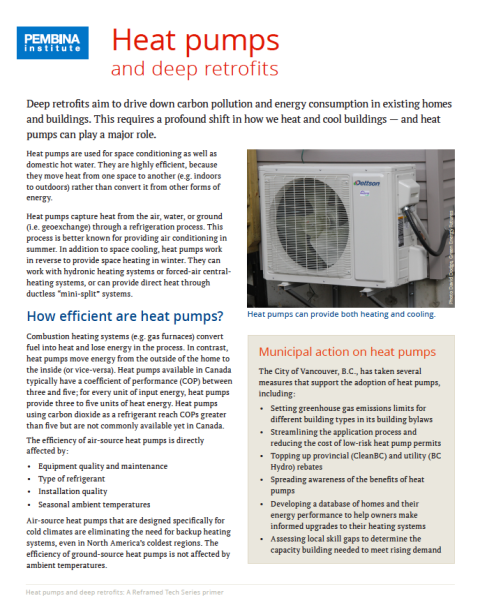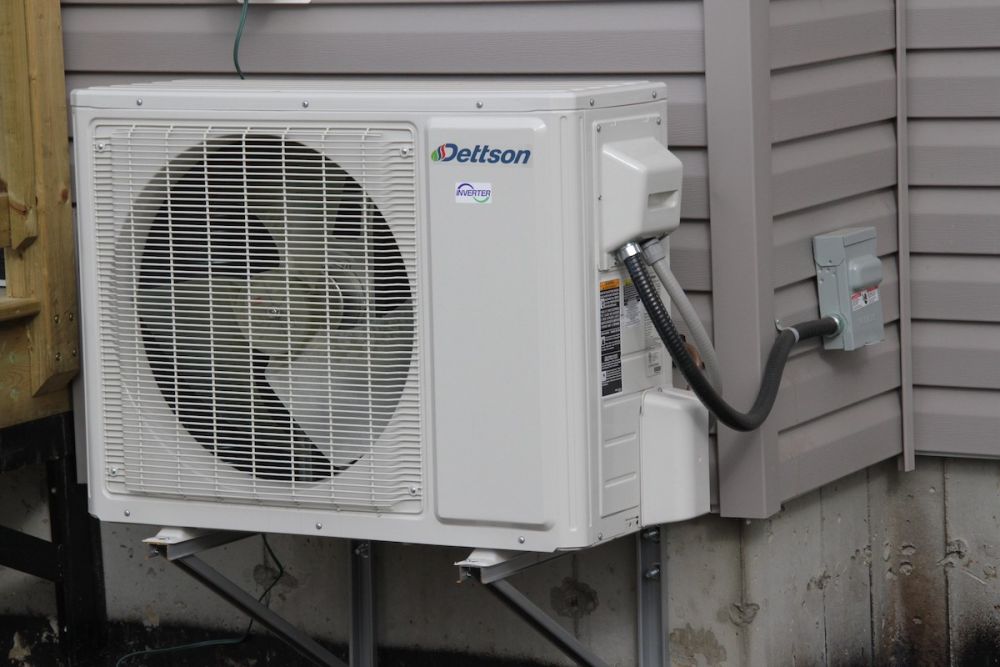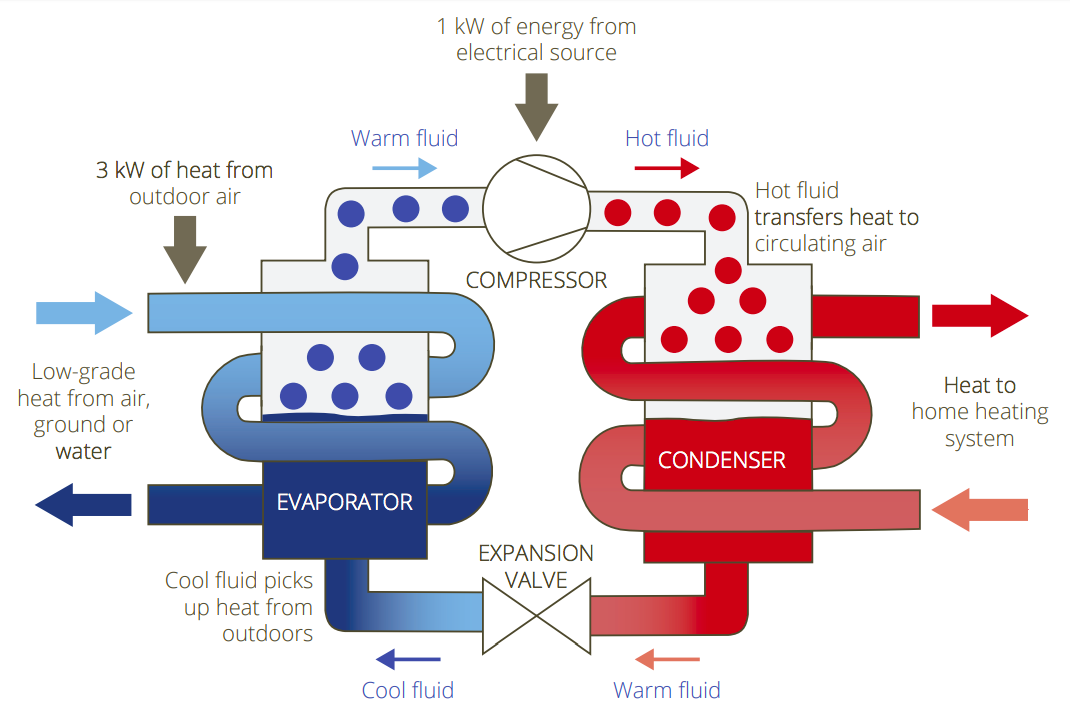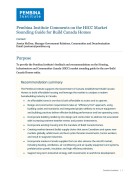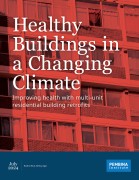Deep retrofits aim to drive down carbon pollution and energy consumption in existing homes and buildings. This requires a profound shift in how we heat and cool buildings — and heat pumps can play a major role.
Heat pumps are used for space conditioning as well as domestic hot water. They are highly efficient, because they move heat from one space to another (e.g. indoors to outdoors) rather than convert it from other forms of energy.
Heat pumps capture heat from the air, water, or ground (i.e. geoexchange) through a refrigeration process. This process is better known for providing air conditioning in summer. In addition to space cooling, heat pumps work in reverse to provide space heating in winter. They can work with hydronic heating systems or forced-air centralheating systems, or can provide direct heat through ductless “mini-split” systems.
Download the primer, or keep reading below.
Find more resources to help local governments accelerate deep retrofits.
How efficient are heat pumps?
Combustion heating systems (e.g. gas furnaces) convert fuel into heat and lose energy in the process. In contrast, heat pumps move energy from the outside of the home to the inside (or vice-versa). Heat pumps available in Canada typically have a coefficient of performance (COP) between three and five; for every unit of input energy, heat pumps provide three to five units of heat energy. Heat pumps using carbon dioxide as a refrigerant reach COPs greater than five but are not commonly available yet in Canada.
The efficiency of air-source heat pumps is directly affected by:
- Equipment quality and maintenance
- Type of refrigerant
- Installation quality
- Seasonal ambient temperatures
Air-source heat pumps that are designed specifically for cold climates are eliminating the need for backup heating systems, even in North America’s coldest regions. The efficiency of ground-source heat pumps is not affected by ambient temperatures.
Municipal action on heat pumps
The City of Vancouver, B.C., has taken several measures that support the adoption of heat pumps, including:
- Setting greenhouse gas emissions limits for different building types in its building bylaws
- Streamlining the application process and reducing the cost of low-risk heat pump permits
- Topping up provincial (CleanBC) and utility (BC Hydro) rebates
- Spreading awareness of the benefits of heat pumps
- Developing a database of homes and their energy performance to help owners make informed upgrades to their heating systems
- Assessing local skill gaps to determine the capacity building needed to meet rising demand
A small amount of electrical energy is used to bring a larger amount of heat energy in from the outdoors. The system can also operate in reverse to cool the home.
Integrating heat pumps in deep retrofits
The integration of heat pumps in deep retrofits of multi-unit buildings requires early planning and design integrated with envelope upgrades. Special attention must be given to:
- Understanding how the building’s existing system is operating and how the envelope upgrade will affect this
- Identifying opportunities to reduce peak heating loads and reduce the size of the system needed
- Assessing the potential need for electrical service upgrades and the associated costs
- Integrating heat pumps and service chases (e.g. conduits) into the envelope retrofit from the outset of the design process and working with or removing existing delivery systems
- Integrating with supplemental mechanical systems, such as heat recovery ventilators or backup heating (if needed)
- Ensuring quality installation and ongoing maintenance
To facilitate this market transformation, the Pembina Institute is preparing projects that demonstrate the feasibility of whole-building retrofits.
Key considerations
- How can envelope consultants best engage owners about fuel-switching, now or in the future, and integrate heat pumps into their envelope upgrade designs?
- What is an appropriate value to assign to the health benefits of providing cooling for vulnerable occupants, particularly in light of increased extreme heat events?
- What are the risks of scaling up use of heating systems that use refrigerants with high global warming potentials and how can the risks be mitigated? How do we accelerate introduction to Canada of top-performing heat pumps that use CO2 as a refrigerant?
- What needs to be incorporated into retrofit codes or best practice guides to improve the quality of heat pump retrofits?
- How do we address non-technical challenges to retrofitting with heat pumps, such as the “spark gap” (the cost difference between electricity and gas) or the potential effect of increased energy use for cooling?
Join a webinar
The Pembina Institute presents the Reframed Tech Series — webinars on evolving deep retrofit solutions. Watch our second webinar to hear from leaders in heat pump retrofit solutions.
The Pembina Institute is leading an initiative to scale up deep retrofits for healthy, safe, and low-carbon housing. This is an opportunity for companies to showcase innovation and get in on the ground floor of a market transformation. Learn more.

